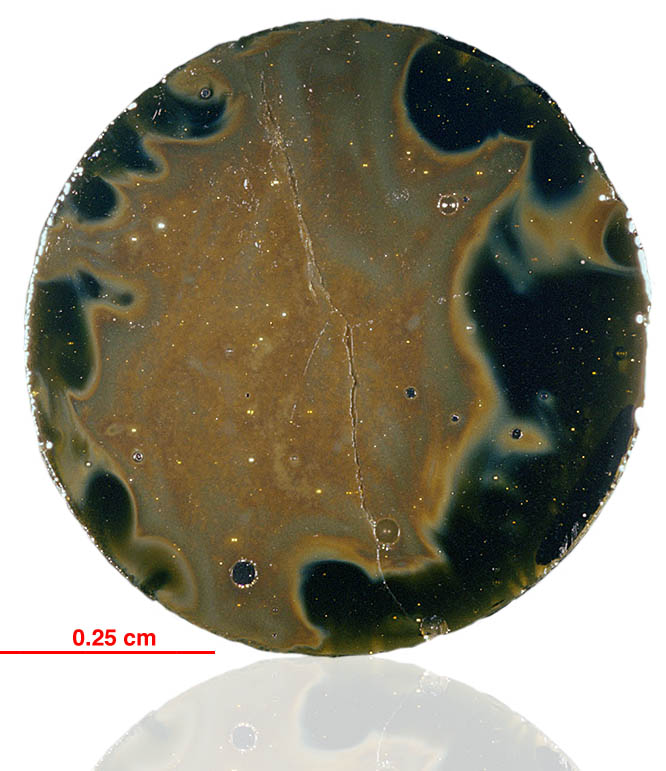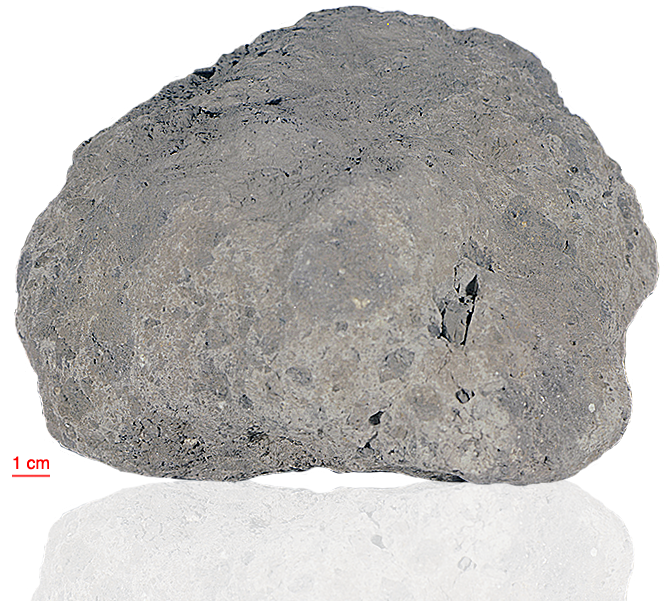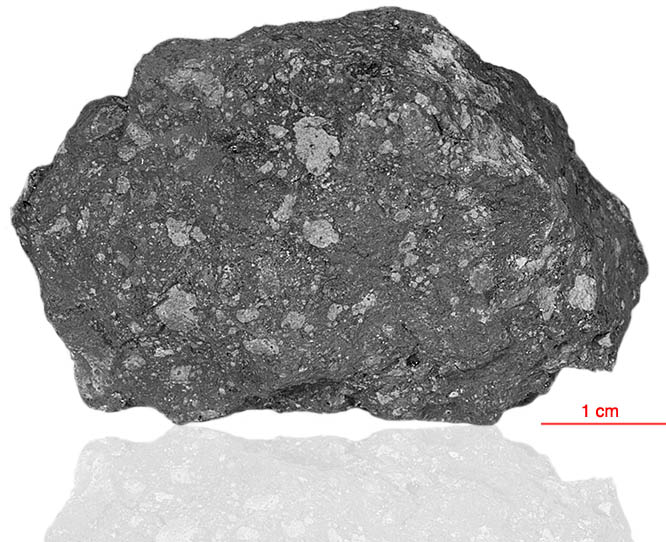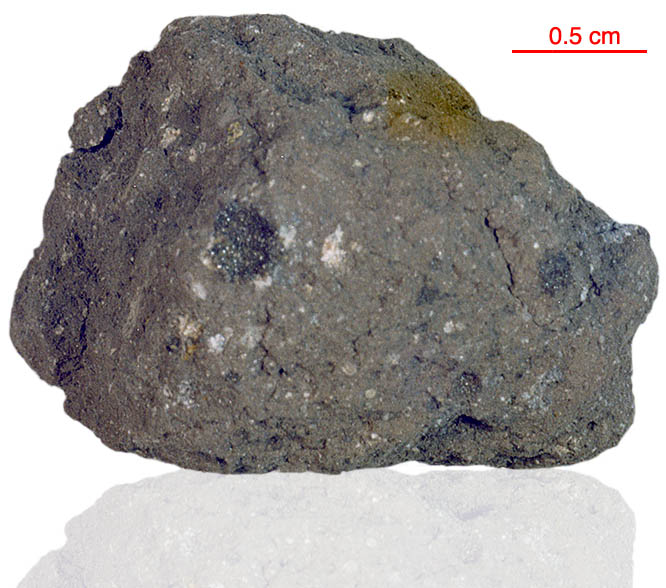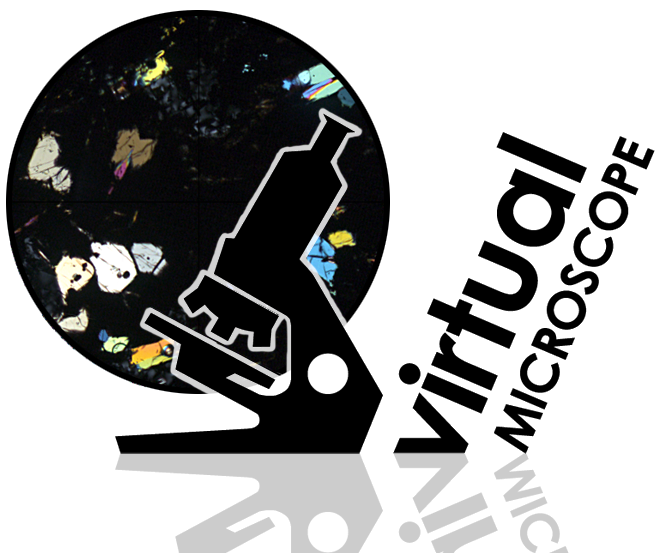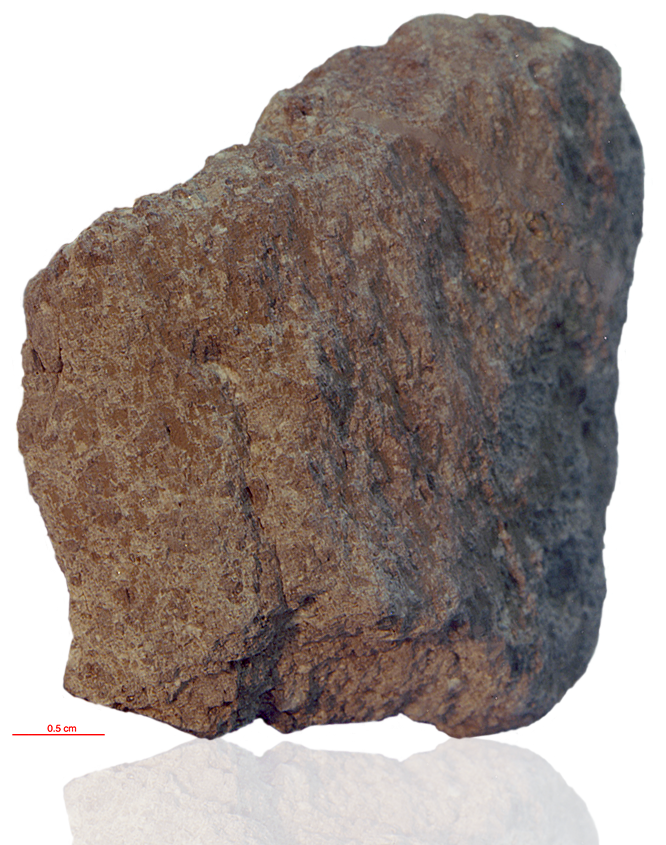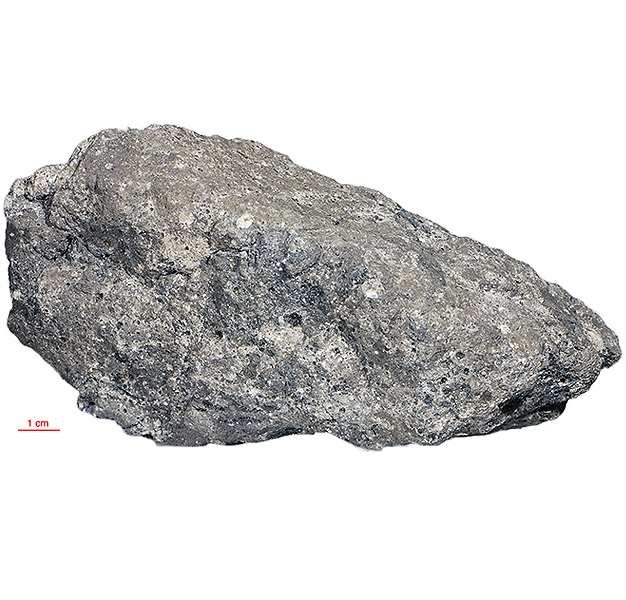
Fact sheet
14306 is a clast-rich, crystalline matrix breccia thought to be from the Fra Mauro Formation. It is a multi-generation breccia and is cut by a prominent vein of black glass, probably produced by the last impact. 14306 has little matrix. Ferroan anorthosite and norite are important constituents of the breccia.
14306 weighed 584 grams before analysis. Dating of zircon in norite clasts from this sample give ages from 4.18 to 4.21 billion years. The breccia event represented by 14306 has not been dated (probably 3.9 b.y., by analogy to other Apollo 14 breccias).
Further details of this and other Apollo samples are here: http://curator.jsc.nasa.gov/lunar/
The Apollo 14 landing site was in a region formed by impact-basin debris.
Most of the 42 kilograms of rocks and soil collected on Apollo 14 are breccias (rocks that are composed of fragments of other, older rocks). In some cases, the rock fragments that form a breccia are themselves breccias. Such rocks obviously have experienced complex histories with multiple generations of impact events. Some breccias were heated enough that some of the material in the rock was melted.
Apollo 14 was launched on 31 January 1971.

